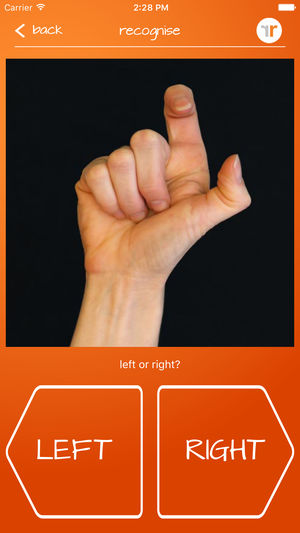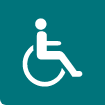Graded Motor Imagery (GMI)
Introduction
Graded Motor Imagery or GMI is another management option for Complex Regional Pain Syndrome or CRPS that have shown in some studies to be effective.
Many physiotherapists and OT's also use Mirror Therapy also known as Mirror Visual Feedback (O’Connell, N.E. et al 2016) as another management option for CRPS. Complex Regional Pain Syndrome (CRPS) is a complex and difficult condition not only to diagnose but also to treat, therefore finding a treatment that can help every CRPS patient is extremely difficult as all CRPS patients are individuals where their CRPS signs and symptoms are concerned.
Graded Motor Imagery is just one of a range of CRPS management options that have been included in the Complex Regional Pain Syndrome (CRPS) guidelines from the Royal College of Physicians in the UK. We’ve previously written an article on Mirror Therapy as a CRPS treatment however this current article focuses on the Graded Motor Imagery Programme (GMI) for CRPS.
What is Graded Motor Imagery (GMI)?
Graded Motor Imagery (GMI) was first developed by Professor Lorimer Moseley and is an up to date rehabilitation programme that has been based on clinical trials and the latest science. GMI is seen as a cost-effective and noninvasive treatment with limited adverse effects and complications (Limakatso, K. et al 2016).
In the 2016 systematic review of interventions (O’Connell, et al 2016) that was aimed at reducing pain, disability, or both, in patients with complex regional pain syndrome (CRPS), Graded Motor Imagery or GMI was found to may be effective for pain and function when compared with the usual CRPS treatment options.
Johnson, S. 2013 concluded that Graded Motor Imagery is an approach used for the rehabilitation of patients with chronic pain; it aims to activate the cortical networks involved in sensory-motor processing.
The GMI or Graded Motor Imagery Programme for Complex Regional Pain Syndrome (CRPS) is a 3 stage treatment that aims to gradually engage cortical motor networks without triggering the protective response of pain.(Bowering, K. et al 2013)
What Tools Are Involved In Graded Motor Imagery (GMI) for CRPS?
According to the Ranelli, S. (2013) GMI uses 2 main tools including: Flash cards – which are a random collection of pictures of hands and feet in different postures and position and doing different tasks. They are used to help re-train the ability to recognise where the body or body part is in space.
A computer programme OR App called ‘Recognise’ However you can also include magazines, imagination and creativity to the list of tools that you can use for Graded Motor Imagery (GMI).
Recognise™ App
The Recognise™ app has been developed and released by the NOI Group™ and is available for both iPhones/iPads and Android.

Here is a screenshot of the Recognise™ app via iTunes - Copyright NOIGroup
The app uses the same pictures as in the flash cards and also assesses your accuracy (how many of the positions and postures you recognise correctly as left or right side) and the time it took for you to record your response.
This means that you can take a step-by-step approach to improving your recognition ability and this is usually associated with a decrease in pain and an improvement in your function.
It is available for the following areas of the body:
- Foot
- Knee
- Back
- Hand
- Neck
- Shoulder
As we’ve just mentioned, the app accurately measures both the accuracy and speed of recognising an image of the body as either the left or right. This is the first stage of the Graded Motor Imagery Programme and it is otherwise known as Left/Right discrimination. The app provides the option to vary the number of images and the length of time the user has to view each image.
As part of the Recognise™ Hands app, to increase complexity, the user can progress through ‘Vanilla Hands’, ‘Context Hands’ and ‘Abstract Hands’.
The Recognise™ app also helps the patient go through the second stage of the Graded Motor Imagery Programme; explicit motor imagery.
The app is considered a simple tool to help a patient go through the Graded Motor Imagery (GMI) Programme. However the NOI Group™ website – Graded Motor Imagery does explain in detail the process of graded motor imagery (GMI), and how to incorporate the use of the Recognise™ app. You can purchase the Recognise™ app via the NOI Group™ website at a cost of £5.99 (AUS$9.99) or via your phone's app suite/centre.
Features of the Recognise™ App
There are a number of features as part of the Recognise™ app and according to the NOI Group™’s app description, these are:
- ‘Memory’ and ‘Speed Match’ tools to take your training to the next level
- Graded difficulty levels and personal best challenges
- Detailed onscreen results and graphs to map your progress
- Powerful clinical integration tools – export and email your results directly to your clinician or therapist
- Capture your own images on your phone or table and use them in your training
- Comprehensive explanation of the science behind left/right discrimination and Graded Motor Imagery
Recognise™ App Features taken from iTunes
Stages of Graded Motor Imagery (GMI)
The GMI treatment programme involves 3 progressive stages that are designed to exercise the brain in different ways. These techniques or stages are delivered sequentially but this is flexible and can be moved forwards, backwards or sideways by the clinician to completely suit the patient. If symptoms occur in one of the sequential steps, the clinician may go back to the previous step to decrease the unwanted symptoms.Those stages are:
- Left/Right discrimination – Identify left or right images of their painful limb or body part
- Explicit motor imagery – Thinking about moving without actually moving
- Mirror therapy – This is mentioned in a separate article – How To Use Mirror Therapy for CRPS (Graded Motor Imagery website) The GMI treatment programme involves 3 progressive stages that are designed to exercise the brain in different ways. These techniques or stages are delivered sequentially but this is flexible and can be moved
- Bowering, K.J. et al (2013) ‘The effects of graded motor imagery and its components on chronic pain: a systematic review and meta-analysis,’ Journal of Pain. 2013 Jan; 14(1) pp 3-13. doi: 10.1016/j.jpain.2012.09.007. Epub 2012 Nov 15. Available from: < https://www.ncbi.nlm.nih.gov/pubmed/23158879>#
- Cocksworth, R.L. & Punt, T.D. (2013) ‘When the left hand does not know what the left hand is doing: response mode affects mental rotation of hands,’ Exp Brain Res (2013) 228: 87. https://doi.org/10.1007/s00221-013-3540-2#
- Complex regional pain syndrome in adults (2nd edition), Royal College of Physicians (UK CRPS Guidelines) 2nd Edition July 2018. Available fro download via:
- Davis, M (2015) ‘GMI’ < https://www.sportsmedbiologic.com.au/graded-motor-imagery.html>
- Decety J. (1996) ‘The neurophysiological basis of motor imagery.’ Behav Brain Res 1996;77:45–52.
- Decety J. et al. (1994) ‘Mapping motor representations with positron emission tomography.’ Nature 1994;371:600–602.
- Ferraro, MC. et al (2023) 'Interventions for treating pain and disability in adults with complex regional pain syndrome- an overview of systematic reviews (Review)' Cochrane Database Syst Rev. 2023 Issue 6. Art. No.: CD009416. DOI: 10.1002/14651858.CD009416.pub3. Available from: <https://www.cochranelibrary.com/cdsr/doi/10.1002/14651858.CD009416.pub3/pdf/full>
- Ganis G. et al. (2000) ‘Transcranial magnetic stimulation of primary motor cortex affects mental rotation.’ Cereb Cortex. 2000;10:175–180.
- Graded Motor Imagery website ‘What is Graded Motor Imagery?’GMI website. Available from: ● Hotta, J. (2015) ‘Painful view on motor actions,’Body In Mind website. 2015, July 2. Available from:
- Johnson, S. et al. (2012) ‘Using graded motor imagery for complex regional pain syndrome in clinical practice: Failure to improve pain,’ European Journal of Pain. 04/2012. Vol 16(4), pp 550-561. FULL TEXT Available from:
- Johnson, R. (2014) ‘Graded Motor Imagery to Treat CRPS,’ MAPS website. 2014, October 16. Available from:
- Limakatso, K., Corten, L., and Parker, R. (2016) ‘The effects of graded motor imagery and its components on phantom limb pain and disability in upper and lower limb amputees: a systematic review protocol,’ Syst Rev. 2016; 5: 145.
- McCabe, C.S. et al (2003) ‘A controlled pilot study of the utility of mirror visual feedback in the treatment of complex regional pain syndrome (type 1)’
- Rheumatology 2003;42:97–101 doi:10.1093/rheumatology/keg041
- Maihöfner, C. & Speck, V. (2012) ‘Graded motor imagery for complex regional pain syndrome: Where are we now?’ European Journal of Pain. Volume16, Issue 4. April 2012, Pages 461-462 < https://onlinelibrary.wiley.com/doi/full/10.1002/j.1532-2149.2011.00106.x>
- Méndez-Rebolledo, G. et al (2016) ‘Update on the effects of graded motor imagery and mirror therapy on complex regional pain syndrome type 1: A systematic review,’ Journal of Back and Musculoskeletal Rehabilitation. 2017 vol. 30, no. 3, pp. 441-449. Available from: < http://content.iospress.com/articles/journal-of-back-and-musculoskeletal-rehabilitation/bmr150500>
- Moseley, G.L. (2004)a ‘Graded motor imagery is effective in longstanding complex regional pain syndrome: a randomised controlled trial,’Pain. 2004, March. Vol 108 (1-2) pp 192-198. Available from: PMID: 15109523> For FULL text visit Body In Mind website
- Moseley GL. (2004)b ‘Imagined movements cause pain and swelling in a patient with complex regional pain syndrome.’ 2004b; 62:1644.
- Moseley GL. (2005) ‘Is successful rehabilitation of complex regional pain syndrome due to sustained attention to the affected limb?’ A randomised clinical trial. Pain 2005; 114:54–61.
- Moseley, G.L. (2006) ‘Graded motor imagery for pathologic pain: A randomized controlled trial’ Neurology 2006; 67:2129 2134
- Mosely, G.L. et al. (2008) ‘Thinking about movement hurts: The effect of motor imagery on pain and swelling in people with chronic arm pain,‘ Arthritis & Rheumatology. 2008, 15 May. Vol 59 Issue 5. pp 623-631. Available from: < http://onlinelibrary.wiley.com/doi/10.1002/art.23580/full> doi: 10.1002/art.23580
- Neuro Orthopaedic Institute (2014), ‘Graded Motor Imagery,’ 2014. Available from:
- O’Connell, NE et al (2013) ‘Interventions for treating pain and disability in adults with complex regional pain syndrome (Review)’ Cochrane Database Syst Rev. 2013 Apr 30;(4). Available from: < http://cochranelibrary-wiley.com/doi/10.1002/14651858.CD009416.pub2/epdf/standard>
- Ortiz, J et al. (2016) “Benefits of the Modified Graded Motor Imagery Protocol in the Treatment of Patients With Complex Regional Pain Syndrome Type I and Type II,” 2016 supp. Vol 11.1, pp 136S-136S. Available from: < http://journals.sagepub.com/doi/abs/10.1177/1558944716660555jl>
- Ranelli, S. (2013) ‘Managing CRPS – Graded Motor Imagery programme,’Pain Health website.
- Smart KM, Ferraro MC, Wand BM, O'Connell NE. Physiotherapy for pain and disability in adults with complex regional pain syndrome (CRPS) types I and II. Cochrane Database of Systematic Reviews 2022, Issue 5. Art. No.: CD010853. DOI: 10.1002/14651858.CD010853.pub3. Available from: <https://www.cochranelibrary.com/cdsr/doi/10.1002/14651858.CD010853.pub3/pdf/CDSR/CD010853/CD010853.pdf>
- Smart, K. M. et al. (2015) ‘A Cochrane Systematic Review of physiotherapy for pain and disability in adults with Complex Regional Pain Syndrome (CRPS),’ The Irish Pain Society Annual Scientific Meeting.
- Swart, CMA. et al (2009) “Cortical changes in complex regional pain syndrome,” European Jour of Pain. 2009;1(9):902-907. Available from
- Walz, A.D. et al (2013) “Graded Motor Imagery and the Impact on Pain Processing in a Case of CRPS” The Clinical Journal of Pain. March 2013 – Volume 29 – Issue 3 – p 276–279. Available from: < https://journals.lww.com/clinicalpain/Abstract/2013/03000/Graded_Motor_Imagery_and_the_Impact_on_Pain.10.aspx>
*This article on Graded Motor Imagery (GMI) is for information purposes only. Please note Graded Motor Imagery (GMI) is not meant to replace your regular current treatment regime, it is usually explained to you and practiced in a hospital or clinic setting. If in doubt please contact your doctor or pain specialist. Burning Nights CRPS Support cannot be held liable for any injury, loss, accidental damage. Please refer to the Disclaimer for full details.


 £
£